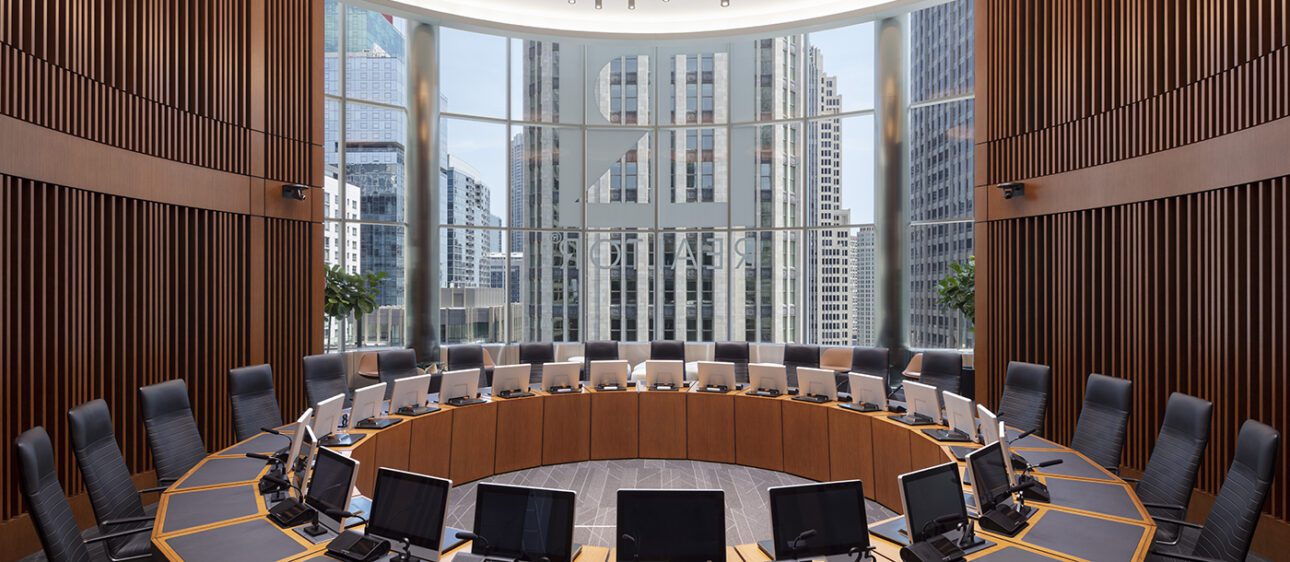The 2011-12 retro-commissioning effort focused on the temperature control system, four air-handling units (AHUs), and the chilled water pumping system.
- Seven retro-commissioning measures (RCMs) were identified through functional testing, review of the building automation system (BAS), and review of trend log data. RCMs included occupancy scheduling of various office and conference rooms, active supply air temperature reset, active chilled water differential pressure reset, and optimization of the free-cooling mode for the chilled water system.
- Four of the building’s least critical AHUs were candidates for supply air temperature reset because they maintained a fixed discharge setpoint of 54°F. By implementing an active reset strategy, involving monitoring of cooling load control parameters for all zone VAV boxes and terminal air valves, the supply air setpoint was reset upward only when the internal cooling load of the building was near a minimum. This RCM alone was projected to save approximately 107,000 kWh of electrical energy, yielding annual savings of $13,400 with a simple payback of 1.4 years.
- The secondary chilled water pumps maintained a constant differential pressure setpoint, but chilled water valves throughout the facility were rarely open more than 50%. With an active reset strategy, the BAS monitors the position of the AHU cooling valves and resets the dP setpoint downward, allowing control valves to open further without losing temperature control. This RCM was responsible for savings of 40,400 kWh per year ($3,555) and a simple payback of 10 months.
- During 2019, as part of the university’s FY2019 PM+Cx retro-commissioning initiative, GBA again visited the lab. This time, 17 energy conservation measures were developed, focusing on fume hood face velocity reduction and occupant hood management; other airflow measures; demand control ventilation for labs; and chilled water optimization. Preliminary estimated annual savings from recommended measures included 2.42 million kWh of electricity and 35,800 Mlb of steam, yielding cost savings of $511,500. Simple payback is 3.1 years, including a utility incentive.




